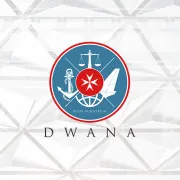Malta's membership of the European Union required a major reform to upgrade and modernise the entire Department of Customs. Through the ambitious Business Change Management Project, Malta Customs has managed, and will continue with its efforts, to simplify relations with customers, to streamline procedures, to maximise compliance with fiscal obligations, to raise awareness among concerned persons of the importance of customs and customs policy, and to develop transparency in the administrative action, communication, and dissemination of information by providing training activities and raising awareness at all levels.
The large increase in world trade has put an additional burden on Customs in its role of controlling illicit trade and therefore the implementation of improved practices in line with the modern administrative principles, especially those prevailing in the EU, is essential. Malta Customs Department places great emphasis on the integrity with which it pursues its goals in compliance with the principles of legality, transparency and fairness of action - but at the same time, by using effective risk analysis it ensures more rapid and efficient controls without useless bureaucratic and procedural ties.
Project details
Malta Customs embarked on a customs modernisation project in 2002, an essential part of which was the implementation of the ESKORT Clearance Risk Analysis system to be used for screening of imports, exports, and manifests.
The ESKORT Clearance Risk Analysis system is fully integrated with the Malta Customs operational systems.
After a few years of successful results from the ESKORT system, Malta Customs decided to also use it to address European Union Safety & Security requirements. Common risk criteria for security and safety apply to all goods crossing the EU borders to ensure equal protection of all EU citizens and member states.
The solution
The ESKORT Customs Clearance Risk Analysis, a component of the INTRASOFT Compliance Suite, was initially implemented to address the import, export and manifest requirements of the customs modernisation project and, after considerable success, was later extended to address EU Safety & Security recommendations.
The results
Among the benefits achieved by the introduction of the ESKORT Clearance Risk Analysis system are the following:
- Integration of all aspects of risks into one single comprehensive system
- Enhanced precision of selection of declarations for investigations
- Reduced number of investigations with no result
- Reduction in administrative and time burden placed on traders
- Increased efficiency and effectiveness
- Maximum flexibility for subsequently extending the scope as organisational requirements change

